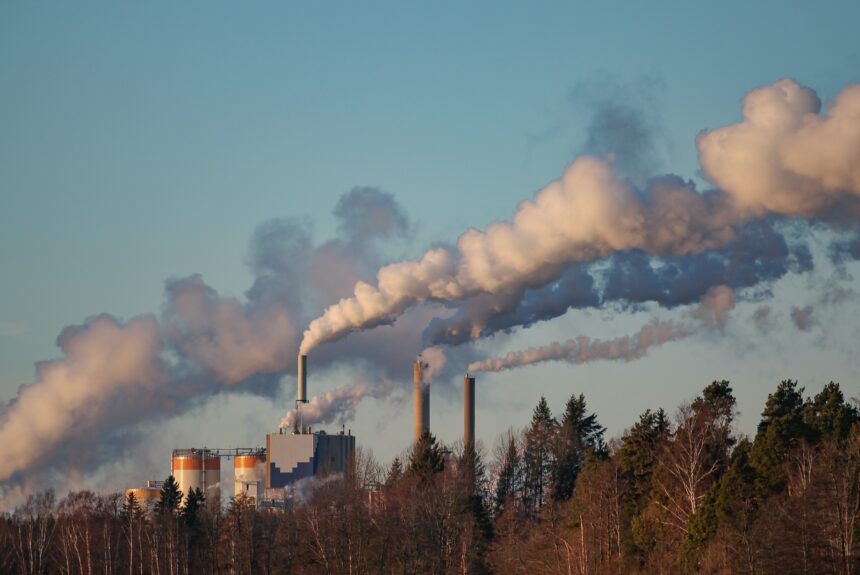Sucking carbon out of the air using giant fans might seem like science fiction – but this is actually happening and has the potential to be a key means of dealing with climate change. The International Energy Agency (IEA) has indicated that by 2030, Direct air capture systems (DAC) could be capturing more than 85 million tonnes of carbon annually, reaching 980 million tonnes by 2050.
>>>READ: AspiraDAC Leads the Way To Carbon Neutrality with Solar Powered Devices
Direct air capture uses a similar process as plants when they absorb CO2 for photosynthesis. The DAC system captures air and uses various chemical reactions to extract the CO2 before storing or reusing it. The idea has been around for a long time and was originally used during the Second World war to maintain breathable air in submarines.
As awareness of climate change increases, direct air capture is now attracting the attention of big business and federal researchers. Since 2020, the US Department of Energy has invested 44 million dollars in DAC. Companies like Microsoft, Stripe, Shopify and Swiss Re are already purchasing DAC removal to offset carbon emissions.
Interest in DAC has been growing for a while. The International Energy Agency indicates that 19 small-scale plants, often pilot operations, have been active for some years in several countries, including Canada, Finland and Switzerland. 2021 saw the arrival of the first large commercial DAC plant operating on a major scale. Located in Iceland, it involves Swiss company Climeworks working with Carbix, an Icelandic carbon storage firm. Climeworks Orca Plant now exacts 4,000 tonnes of CO2 annually, the equivalent of emissions from 790 cars. Orca comprises eight large shipping container-style boxes known as collectors. Slats on the front of each box allow air to enter drawn by 12 fans located at the back. Filters remove the CO2 by attaching it to molecules called amines, which are then mixed with water and pumped deep underground. Over time, the mixture turns into rock. All the systems are sustainably powered by renewable energy from a nearby geothermal plant.
Occidental is in the process of developing an even bigger plant in Texas, with the aim of removing one million tonnes per year from the air near its oil fields. More are already being planned, with up to 70 plants operating by 2035. The Occidental plants utilise technology from 1Point5, which uses fans to capture the air. This is passed through a potassium hydroxide solution, allowing a chemical reaction to occur turning into a liquid. Following other chemical processes designed to make it more concentrated, the CO2 becomes a gas that is stored underground or reused to make low carbon fuel, plastics and cement.
>>>READ: Lithos Carbon is Using Enhanced Rock Weathering to Capture CO2
A different type of DAC technology is being used at Arizona State University where a ‘mechanical tree’ has been installed. This system involves a metal column and five-foot diameter disks. Each disc possesses six ‘leaves’. The tree is 33 feet high and collects carbon from the air. When the tree is fully loaded with carbon, it retracts into a nine-foot canister allowing the carbon dioxide to be removed, before the tree may remerge. Operated on a continual basis, it is anticipated that the tree will remove up to 200 pounds of carbon daily. More ‘mechanical trees’ are planned. This innovative form of DAC technology is based on research by ASU Professor Klaus Lackner and turned into a commercial idea by Irish company Carbon Collect.
Numerous other projects worldwide are in the pipeline. In the UK for example, Storegga is developing a site in Scotland capable of capturing and storing between 500,000 and one million tonnes of atmospheric CO2 annually. DAC schemes designed to remove and reuse carbon dioxide to create synthetic fuels are being developed in Chile and Norway. Aramco is exploring ways of capturing C02 on the move, from passenger vehicles, commercial trucks and boats, with a pilot project capturing 40% of emissions from a Volvo truck.
As more and more DAC schemes begin operating, it is anticipated that the overall costs involved will decrease significantly. At the moment the cost of removing one ton of CO2 at the Icelandic Orca site is in the region of $600-$800. The aim is to reduce such figures to approximately $100-$200, making it much more cost-effective. With the growth of additional ways of reusing the collected carbon, particularly as synthetic fuel, the long-term potential opportunities for this technology are regarded as extremely good. Vicki Hollub, chief executive officer of Occidental believes that ultimately its involvement in low carbon business will become as big as its legacy chemicals business.
Angela Youngman is a long established freelance journalist and author based in the UK specialising in business, sustainability, travel, tourism, leisure, food & drink.
The views and opinions expressed are those of the author’s and do not necessarily reflect the official policy or position of C3.
